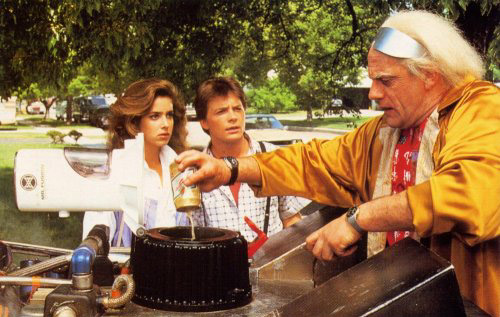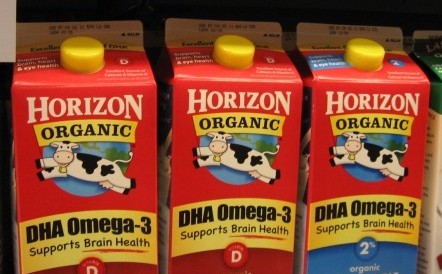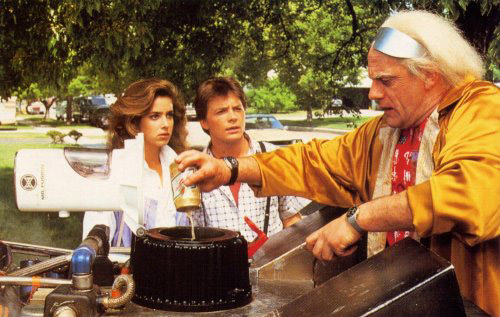Send your question to Umbra!
Q. Dear Umbra,
Not long ago, I saw a video of a Japanese scientist who had created a small machine that converted discarded plastics back into fuel. He was demonstrating it to schoolchildren. Is something happening with this technology? If it is true it could certainly help to save us all.
Judy G.
Bowler, WI
 I’m still waiting on the hovercraft …A. Dearest Judy,
I’m still waiting on the hovercraft …A. Dearest Judy,
The Japanese scientist you speak of is most likely Akinori Ito of Blest Corporation. The technology you’re referring to is the “Waste Plastic Oiling System,” seen in this video. This machine converts polypropylene (PP), polyethylene (PE), and polystyrene (PS) plastics “back into oil.”
“It’s made from oil, so it’s probably not that difficult to convert it back. That’s how we started,” says Ito in the video, which is posted on the United Nations University YouTube channel. To Ito, garbage is “an oil field. A plastic oil field.”
Blest’s oil conversion machine costs about $12,700, and is sized for home use. According to the Blest company website, plastics should be cleaned before placing them in the oil conversion machine. The machine then heats the plastic, creating a boiling liquid. In the video, the process is described rather simplistically: “Gas passes through and then tap water cools the gas and turns it into oil. ‘The oil is OK to burn as is,'” says Ito. It can also be processed more to make gasoline, diesel, and kerosene. In the current Blest machine, 2.2 pounds of plastic garbage converts into 0.26 quarts of oil.
Another machine that does a similar plastic-to-oil conversion is the Envion Oil GeneratorTM. This industrial-size converter turns “petroleum-based plastics into synthetic light-medium oil that can be further refined to produce commercial fuels such as gasoline, kerosene, jet fuel, and diesel.” A prototype has been in operation since 2009 in Montgomery County, Md.
Judy, your enthusiasm for this machine is certainly understandable. Being able to convert a soda top into gasoline is innovative. But will such a thing “save us all?” I happen to be excited by the seltzer machine I use at home, and sometimes think it will solve all the world’s problems. Alas.
Let’s temper our enthusiasm for just a moment and think about the potential downsides of such a machine. Is there pollution or toxic residue that results from this process?
According to the United Nations University website, “Blest tells us that, if the proper materials are fed into the machine (i.e., polyethylene, polystyrene, and polypropylene — PP, PE, PS plastics), there is no toxic substance produced and any residue can be disposed of with regular burnable garbage. They also explain that while methane, ethane, propane, and butane gasses are released in the process, the machine is equipped with an off-gas filter that disintegrates these gases into water and carbon.”
That sounds promising. The positive effects on plastic waste management are certainly a plus, as is the potentially reduced waste in landfills and the chance that technology of this sort could reduce dependence on foreign oil sources. But what about CO2 emissions, Judy? Dr. Ito says, “If we turned our plastic garbage into oil, then our CO2 emissions could be much lower.”
Re-converted oil may be less resource-intensive in terms of extraction and transportation, therefore reducing overall CO2 emissions. But burning oil, even converted and recycled oil, is still burning oil, and it results in CO2 emissions.
Another thing to consider, Judy, is whether this machine addresses the root of our carbon footprint problems — or merely perpetuates more business-as-usual wastefulness.
What do you think, readers? Is a solution like this machine a geoengineering Band-aid or a viable solution that makes sense to you?
Plastically,
Umbra




